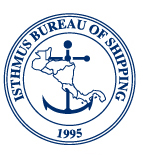FREQUENTLY ASKED QUESTIONS
- How can I get my Ballast Water Management Plan approved?
- A. ClassIBS can approve your Plan. But specific Flag’s requirements for BWM Plan approval has to be taken into account. Panamanian vessels are required to have BWM plan reviewed and approved directly by Flag State office (Segumar Office Panama), please refer to Panama MMC-345. Contact your local office for assistance.
- I will not get my Ballast Water Management Plan approved before the entry into force date – what can I do?
A. At MEPC 63 the IMO agreed that provided the Ballast Water Management Plan has been submitted for approval and the administration or a recognised organisation has issued a statement confirming receipt, the ship can trade for no more than three (3) months with an un-approved Plan onboard. Please refer to specific Flag’s requirement or instructions, if any.
- I have a Ballast Water Management Plan approved to Res. A868 (20), but not to IMO Resolution MEPC 127(53). What do I need to do?
A. The IMO at MEPC 63 agreed that a Ballast Water Management Plan approved in accordance with A.868 (20) will remain valid until the Plan is required to be updated. When a Plan does require updating, for example when a treatment system is installed, then it will need to be amended in accordance with Resolution MEPC 127(53) and be re-approved.
- Can I be issued with a ballast water management certificate for my ship before the BWM Convention enters into force?
A. Class IBS can issue on request a certificate of compliance or statement of compliance with the BWM Convention at any time before entry into force.
- What do “ballast water” and “ballast water capacity” mean?
A. The BWM Convention defines ballast water as “water with its suspended matter taken on board a ship to control trim, list, draught, stability or stresses of the ship.” Ballast water capacity is the total (100% full) capacity of all ballast water tanks, as shown in the ship’s loading manual.
- What capacity ballast water treatment system do I need to install?
A. The BWM Convention does not specify what capacity treatment system is required to be installed. Ideally the system should be capable of treating ballast at the maximum ballast pumping rate of the ship.
Note that if you choose to install a system that has a rated treatment capacity below the maximum ballast water treatment capacity of the ship then an operational restriction will be incurred. This will restrict the maximum ballast pumping rate to that of the maximum treatment capacity of the system installed. This will need to be clearly documented in the ship’s approved Ballast Water Management Plan.
- Hopper dredgers: is the water in the hoppers considered to be ballast and does it therefore need to be treated in accordance with the BWM Convention?
A. At MEPC 62, the IMO agreed that water in the hopper area of hopper dredgers is not considered as ballast and issued BWM.2/Circ.32 – Applicability of the Ballast Water Management Convention – which clarifies the matter.
- Will port state control (PSC) authorities sample and test ballast?
A. Yes. PSC will have the right to sample and analyze the ballast being discharged to ensure that it has been exchanged (a salinity test) or treated to meet the regulation D-2 standard.
- All my ballast is discharged to a shore reception facility. Am I compliant with the BWM Convention?
A. Yes. Ballast discharge ashore does comply with the BWM Convention but the ship will still require an International Ballast Water Management Certificate or Certificate /Statement of Compliance with the BWM Convention, a Ballast Water Management Plan and a Ballast Water Record Book.
- Can I use fresh water as ballast and if I do will my ship be in compliance with the BWM Convention?
A. Yes, but only if it is treated. The IMO decided at MEPC 59 that fresh water (even if generated on board) is ballast, as defined by the BWM Convention. Therefore, fresh water used as ballast is to be treated by an approved treatment system and must meet the D-2 standard.
- Where will I be permitted to exchange ballast?
A. Whenever possible, conduct ballast water exchange at least 200 nautical miles from the nearest land and in water at least 200 mts. deep, taking into account the IMO Guidelines:
“In cases where the ship is unable to conduct ballast water exchange as above, this should be as far from the nearest land as possible, and in all cases at least 50 nautical miles from the nearest land and in water at least 200 mts. in depth.
When these requirements cannot be met, areas may be designated where ships can conduct ballast water exchange. All ships shall remove and dispose of sediments from spaces designated to carry ballast water in accordance with the provisions of the ships’ Ballast Water Management Plan (Regulation B-4). “ |

